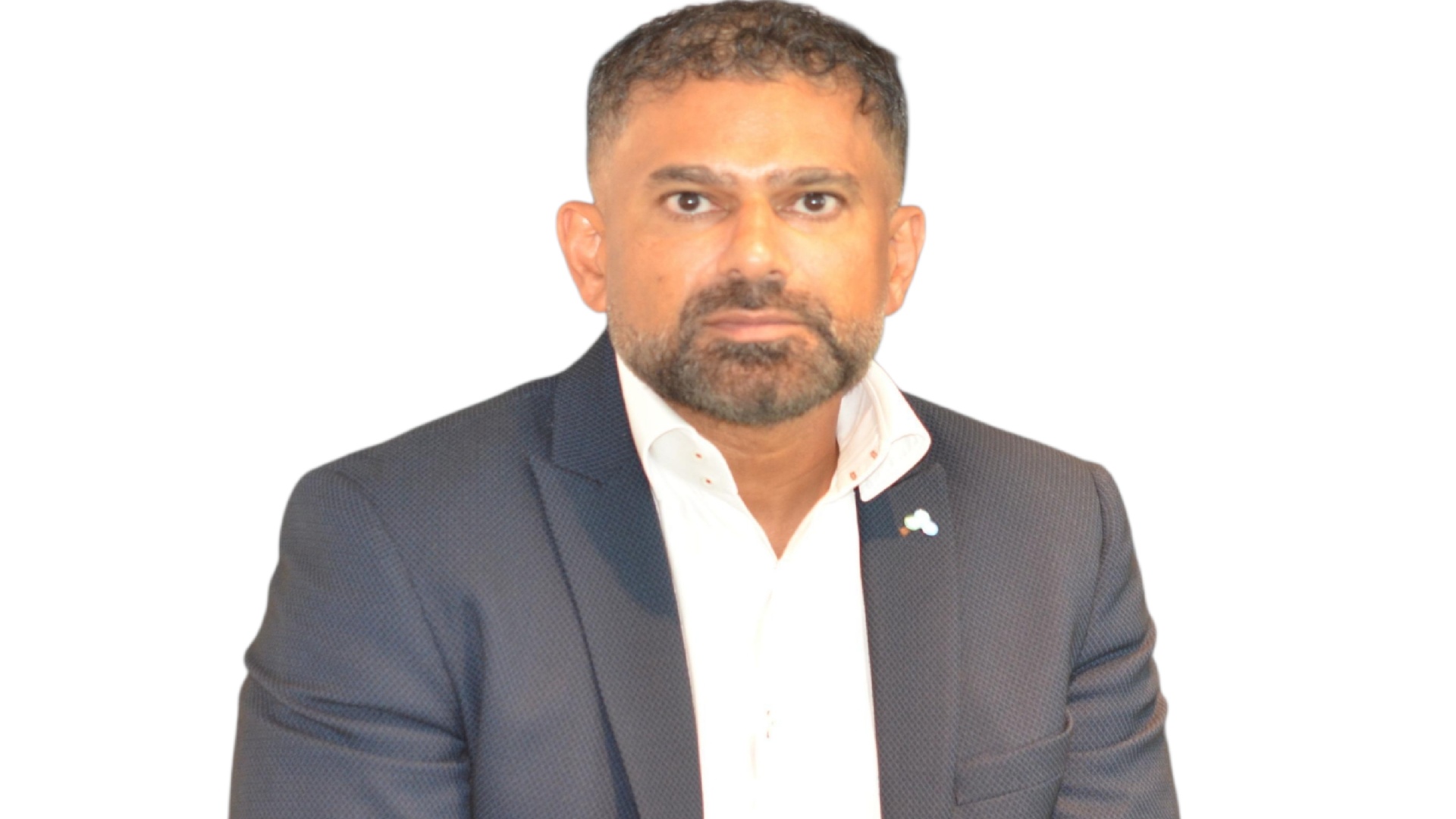Tech Interviews
Navigating the Cybersecurity Landscape in Hybrid Work Environments

As hybrid work becomes the new norm, organizations face a dynamic cybersecurity landscape. Embracing remote and in-office work models, companies must prioritize cybersecurity measures to safeguard against evolving digital threats.

The Integrator recently conducted an exclusive interview with Emile Abou Saleh, Senior Director of Proofpoint Middle East, Turkey & Africa, and dwelled into key areas of focus, tools and technologies used to secure data, the importance of cybersecurity training, and unique risks associated with hybrid work.
What are the key areas of focus for enhancing the hybrid work environment within your organization?
After approximately four years of embracing the remote work model accelerated by the pandemic, companies in the Middle East and across the globe have accepted hybrid work as a regular feature of modern business.
The shift to this working model has continued to drive a human-centric approach from cyber criminals, focusing their efforts on individuals rather than the technological infrastructure. With employees now forming a defensive perimeter wherever they work, whether in the office or outside, our recent research shows that email-based threats, such as Business Email Compromise (BEC), ransomware, credential phishing, compromised cloud accounts, and social media hijacking attacks, are being employed by cybercriminals to steal credentials, siphon sensitive data, and fraudulently transfer funds.
As a result, organizations must secure their hybrid work environment by prioritizing compliance risk management, advancing secure collaboration, and strengthening IT and security infrastructures.
Recognizing the shift towards hybrid work, organizations must implement technology that facilitates seamless communication and collaboration so employees can work wherever they are, minimising operational downtime.
When using collaboration tools, we must ensure they are secure, and such tools may raise compliance issues.
To address these compliance risks, organizations must implement tools and applications that meet regulatory standards to enable teams to stay connected efficiently. This involves a careful balance of enabling productivity tools while managing the risk-cost-benefit ratio effectively.
Lastly, IT and security are paramount. Providing corporate hardware equipped with robust antivirus software and enforcing IT-approved security protocols is key. Our goal is to minimize shadow IT by offering authorized, secure apps that enable our employees to work effectively from anywhere.
- What tools and technologies are you using to secure data in a hybrid work environment?
To secure data within a hybrid work environment, we leverage a host of innovations across our Threat Protection, Identity Threat Defense, and Information Protection platforms. These innovations are designed to stop malicious email attacks, detect and prevent identity-based threats, and defend sensitive data from theft, loss, and insider threats.
Our approach includes advanced email security measures to block phishing and BEC attempts, identity protection to guard against unauthorized access and account compromise, and data loss prevention strategies to secure data across our network.
Our Identity Threat Defense platform offers enhanced protection for productivity tools like Microsoft 365, ensuring that our employees can work safely from anywhere.
- In hybrid work environments, how critical is targeted cybersecurity training in safeguarding against emerging digital threats?
In today’s hybrid work environment, targeted cybersecurity training is essential for combating sophisticated digital threats. The evolving threat landscape in the Middle East demands a comprehensive cybersecurity strategy that includes both technology and education to make employees proactive defenders.
A security awareness program that educates employees on cybercriminal tactics is therefore crucial. It helps them recognize and respond to threats, improving the organization’s security posture. However, a recent Proofpoint study reveals that not all employees receive such training. The UAE stands out positively, with 64% of organizations training their workforce and 52% targeting those most at risk. Additionally, 74% of UAE organizations provide customized security training, the highest among the 14 countries surveyed.
This approach reiterates that cybersecurity is more than an IT issue; it is vital for organizational resilience. Targeted cybersecurity training in hybrid work environments is, therefore, key for safeguarding against emerging threats.
- Could you elaborate on some unique cybersecurity risks associated with hybrid work?
The move to hybrid work has introduced several cybersecurity challenges, requiring organizations to navigate a new threat landscape. One significant threat is the increased risk of insider attacks. As workplaces become more dispersed, controlling and monitoring access to sensitive information has become more complex, and widening cybercriminal attacks surface. A Proofpoint study highlights this concern, with data showing that 32 % of CISOs in the UAE agreed that they had seen an increase in targeted attacks on their organization in 2022 as a result of long-term hybrid work, which made protecting data a top challenge.
Furthermore, employees demonstrated risky behaviors outside of the office – more than half (51 percent) of employees in the UAE and 44 percent of employees in KSA have connected to home or public Wi-Fi networks without knowing if they are secure – an increased occurrence with the hybrid working model.
As traditional working models evolve, the old ways of protecting data no longer suffice. Data loss for organizations is more than just an IT problem, and employees must understand that they play a critical role in preventing data breaches.
Tech Interviews
INTERSEC DUBAI 2026 – AI-Powered Security Cameras: From Reactive Monitoring to Proactive Intelligence

Rudie Opperman: Regional Manager, Engineering & Training – MEA at Axis Communications
- How is AI transforming the role of security cameras from passive monitoring tools into intelligent decision-making systems?
AI is fundamentally changing what security cameras are used for. Cameras are no longer just recording devices that capture footage for review after an incident. They are becoming intelligent sensors that can interpret what is happening in real time.
With AI built directly into the camera, systems can detect objects, recognise patterns and identify unusual behaviour as events unfold. This enables organisations to move from reactive monitoring to proactive decision-making, responding faster and more accurately without relying solely on manual observation or post-incident analysis.
Axis will demonstrate this shift in practice at Intersec Dubai 2026, showing how intelligence at the edge enables cameras to generate actionable insights directly at the source, supporting faster decisions, improved safety and stronger operational outcomes across complex environments.
- How can AI in security cameras enhance operational efficiency while reducing manual monitoring costs?
AI significantly reduces the reliance on continuous manual monitoring by filtering out routine activity and directing attention to events that genuinely require action.
Instead of operators watching multiple screens or reviewing large volumes of footage, analytics highlight exceptions such as unusual movement, safety risks or policy violations. This improves response times, reduces operator fatigue and allows teams to manage larger or more distributed environments without increasing staffing levels.
For organisations operating at scale, this approach delivers measurable efficiency gains while maintaining high levels of situational awareness and control.
- What are the key benefits of edge-based AI processing in security cameras?
Edge-based AI enables data to be processed directly within the camera rather than being sent to central servers or the cloud for analysis.
This allows insights to be generated immediately at the scene, supporting faster response and more reliable system behaviour. It also reduces bandwidth usage and storage requirements, lowering infrastructure demands and overall system complexity.
Processing data locally strengthens resilience and privacy, as systems rely less on constant connectivity and continue to function effectively even in constrained or demanding environments.
- What industries are seeing the greatest impact from AI-enabled surveillance today?
AI-enabled surveillance is delivering the greatest impact in environments where real-time awareness, safety and operational continuity are critical.
This includes sectors such as critical infrastructure, transport and logistics, industrial facilities, smart cities and large public venues. In these settings, AI helps organisations detect issues earlier, respond more effectively and maintain smooth operations in complex or high-risk conditions.
Increasingly, security cameras are also being used as sources of operational data, supporting compliance, planning and informed decision-making beyond traditional security use cases.
- How is Axis leveraging AI to deliver smarter, more reliable, and future-ready security camera solutions?
Axis embeds intelligence directly into its devices and designs systems around open, scalable platforms that can evolve over time.
By combining edge-based analytics, purpose-built processing technology and a strong ecosystem of partners, Axis enables customers to adapt their systems as operational needs change. This approach supports long-term reliability, cybersecurity and consistent performance across the system lifecycle.
Rather than forcing frequent hardware replacement, Axis focuses on architectures that allow intelligence and functionality to grow through software, ensuring systems remain relevant, secure and effective as technology and use cases continue to evolve.
Tech Interviews
Unlocking ROI: How Sovereign AI Platforms Accelerate Innovation

Exclusive Interview with Kevin Dallas, Chief Executive Officer, Enterprise DB
You interviewed more than 2000 senior executives across 13 countries about how they are planning for a genetic AI world. Why a genetic AI and why now?
Well, first of all there’s a large economic opportunity around AI. We forecast to be $16 trillion by 2030, and there’s about a trillion dollars that’s going to be spent in the area of AI over the next 12 months alone. So, every enterprise, every nation is investing in AI.
And when we say AI, there’s different types of AI. There’s generative AI, genetic AI, physical AI, and the time is now for that investment. You’re seeing it in the event today where many companies are making investments across the AI spectrum.
What is the data and AI sovereignty, and what happens when enterprises make it a mission-critical part of their strategy?
Well, to be able to actually run these intelligent applications, there is a need for a sovereign data and AI platform from EDB, Enterprise DB, our partners, NVIDIA, RedHat, and Supermicro. And with this new sovereign platform, we hope to deliver our customers the platform that they need to drive rapid innovation around these new AI applications.
Data sovereignty is gaining increased attention globally in the Middle East and the surrounding markets. How is EDB ensuring compliance, trust, and performance in your deployments?
Well, first of all, we’re finding that in this survey, it was very interesting, 95% of respondents are investing in a sovereign data and AI platform over the next three years.
And what they’re seeing is real benefits. They’re seeing two to three extra the velocity in terms of building out AI applications, and they’re seeing a five-fold increase in ROI. So, this is driving a lot of attention around this space.
Now, from an EDB perspective, we are delivering a standard sovereign data and AI platform that accelerates our customers to market. So, it’s a plug and play platform that resolves the security issues, compliance issues, and regulatory challenges that our customers have in a plug and play way.
How important is the UAE or the GCC region for EDB? Can you tell us about your corporate strategy in the GCC and how that aligns with the regional’s national agenda?
Well, what we found is that the biggest investments globally in sovereign data and AI are actually happening here in the region, in the UAE. There is a national vision that’s been set around open and around sovereign data and AI.
So, we’re very aligned in terms of our approach here. And the region, it’s very much like a Silicon Valley of sovereign data and AI, where there’s a lot of rich discussion around new use cases that our partners and our customers want to enable today versus tomorrow. So, it’s here and now in the region.
Looking ahead, six to 12 months from now, what is your message to the enterprises, governments, and other organizations who are considering or already on the AI journey?
I think in the next six to 12 months, focus on building your own sovereign data and AI platform. By doing this, it’s going to have a fivefold increase in your ROI and certainly increase your velocity to market.
But there is also, I think, a misconception. When we talk about sovereign, we talk about the benefit of secure, we talk about the benefit of compliance and regulatory requirements. Meeting those criteria, in some cases, can be viewed as slowing down the rate of innovations.
The opposite is true with our platform. By using a platform that has this capability built in, you’re able to accelerate your time to market.
How does EDB Postgres AI support data sovereignty in practice?
From a sovereign data and AI platform perspective, there are five key criteria that our customers need in the platform. One, open source based. This guarantees interoperability, access to talent, and it avoids vendor lock-in. This is something that even at a national level is important, open source based.
Second, the need to support multiple workloads, transactional, analytics, and AI workloads on one unified platform. Not three, but one. Third, there’s a need for a low-code, no-code application development environment. An environment that accelerates your time to market, an environment that democratizes AI for all.
So, you don’t have to be a developer, you can be a business decision maker and still create applications. Fourth, there needs to be a single pane glass view across the estate so you can monitor, secure, and drive compliance and meet those regulatory requirements across your entire estate. And then last, but by no means least, you need to be able to deploy in a hybrid fashion, meaning it’s not all about running workloads in the cloud.
You need to be able to run workloads on-prem, in the cloud, or in a dedicated system. So Sovereign is really those five things. It’s the ability to deploy in a hybrid manner.
It’s the ability to view your estate through a single pane of glass. It’s the ability to be able to run in a rich and dynamic low-code, no-code app environment, run multiple workloads, and of course, being open source.
Tech Interviews
Regional Enterprises Lead Global Push for Data and AI Sovereignty

Exclusive interview with Kash Rafique, Vice President and GM Middle East and Africa, Enterprise DB
What are your top priorities and what do you want the region to see from EDB that’s new and different at this year’s GITEX?
I think certainly from a messaging point of view, there’s no doubt that sovereignty is the new intelligence on how we move forward in this market. I think what we’re seeing is that our customers are looking for speed, they’re looking for control of their data within their boundaries, and this is making a big difference really to customers and enterprises in the region. I think that’s where we come in as a trusted player, a partner in the region.
What you’re seeing here at the stand today at EDB is really an alignment of that, the immersive experience here we’re giving to our customer to help them understand some of the solutions that we’re able to provide so far as speed is concerned, control of their data within that sovereignty realm is really something that we are showcasing here.
Can you walk us through to the Sovereignty Matters report, which is quite interesting. What are the biggest takeaways for local enterprises?
First of all, I think we should be very proud, of UAE and the Kingdom of Saudi Arabia, because really they’ve come on top of a global report across 13 economies, across 2,000 enterprises, right the way across the globe. I think what is really appealing or revealing from the report is that 17% of organizations in this region are deeply committed to both data and AI, and this is a significant amount. Compare that to what we are seeing globally, which is 13%, or compare it to the UK, which is 10%, this is significantly higher.
It shows real intent and focus on the sovereignty areas, and I think that’s a big thing. The other thing that we see is the 5x return that enterprises are getting from that commitment that they’ve made. I think this is also very, very testimonial on the kind of return that we’re able to see from the sovereign AI solutions that clients are adopting in this region.
And the third one is 2 ½ x are very confident that they will be leading their industries within their respective areas within the next three years. I think this is a fantastic finding. Again, I think the region should be very, very proud of these results.
How is EDB preparing to lead and support its customers through your local office?
So, the local office is there as a hub to support a very important omnichannel of our business here, and that is related to the partners, the alliances, and the ISVs that are regionally based. The office will be used for workshops, training, engineering, and client innovation centers that we’re planning to build as we move through this year.
We certainly looking forward to is building our relationships even further with key partners such as NVIDIA, IBM, Supermicro, Red Hat, and also many of our local partners. We call them our boutique partners, but they’re also equally important. So, from this perspective, it’s a very important base for us.
It provides a hub, it shows investment, and it shows real commitment in the sovereignty space that we’re actively involved with here in the region.
-

 Tech News1 year ago
Tech News1 year agoDenodo Bolsters Executive Team by Hiring Christophe Culine as its Chief Revenue Officer
-

 VAR9 months ago
VAR9 months agoMicrosoft Launches New Surface Copilot+ PCs for Business
-

 Tech News6 months ago
Tech News6 months agoNothing Launches flagship Nothing Phone (3) and Headphone (1) in theme with the Iconic Museum of the Future in Dubai
-
News10 years ago
SENDQUICK (TALARIAX) INTRODUCES SQOOPE – THE BREAKTHROUGH IN MOBILE MESSAGING
-

 Tech News2 years ago
Tech News2 years agoBrighton College Abu Dhabi and Brighton College Al Ain Donate 954 IT Devices in Support of ‘Donate Your Own Device’ Campaign
-

 VAR1 year ago
VAR1 year agoSamsung Galaxy Z Fold6 vs Google Pixel 9 Pro Fold: Clash Of The Folding Phenoms
-

 Editorial1 year ago
Editorial1 year agoCelebrating UAE National Day: A Legacy of Leadership and Technological Innovation
-

 Tech Features11 months ago
Tech Features11 months ago5 Urgent Questions About Healthcare Network Cybersecurity in the Middle East













